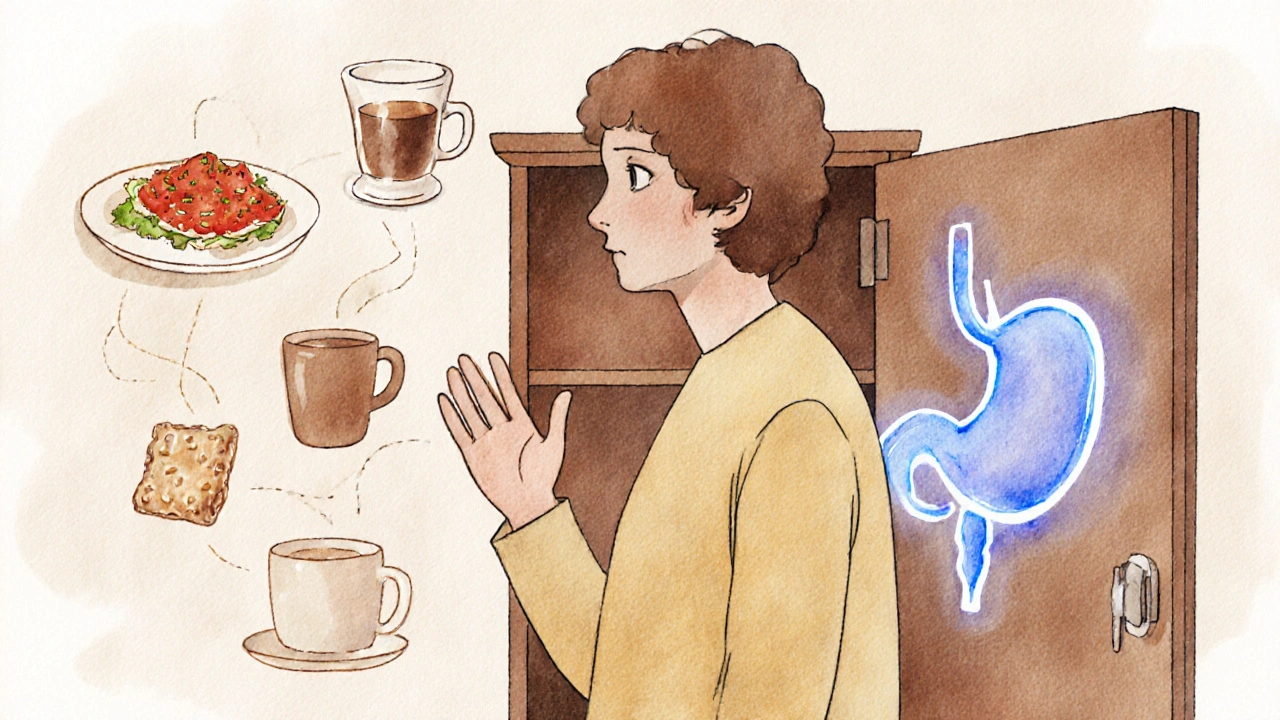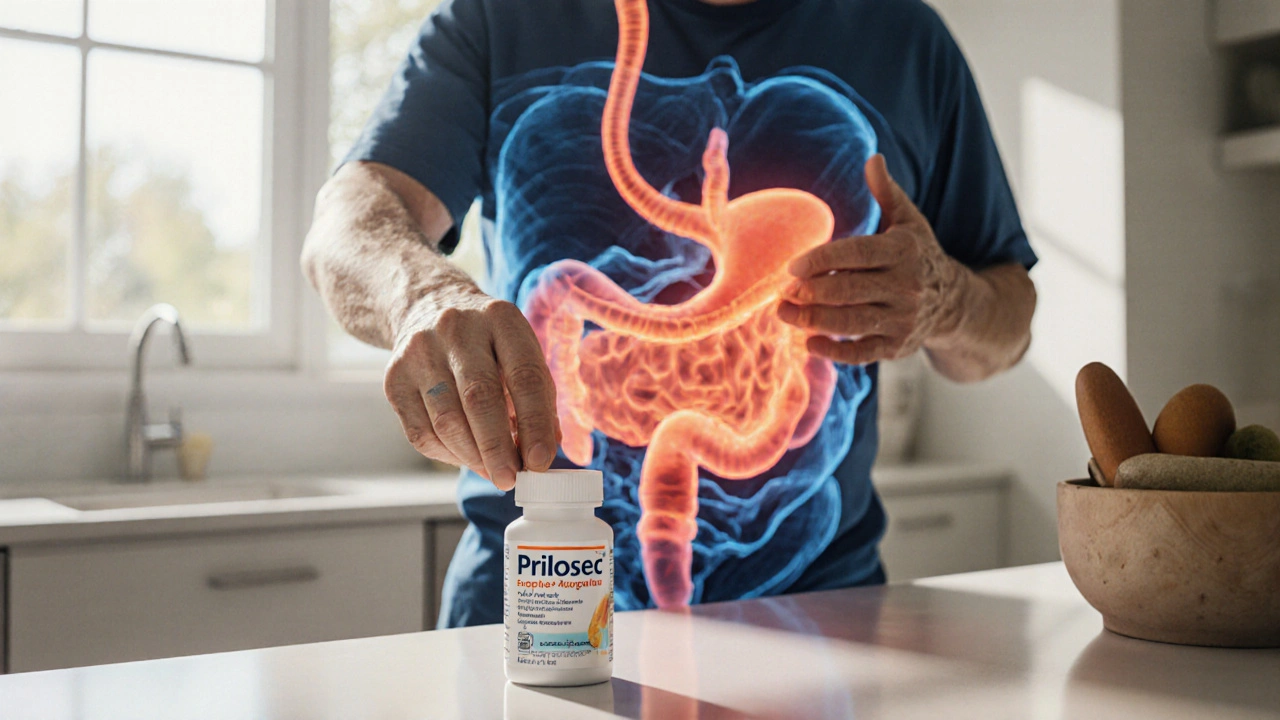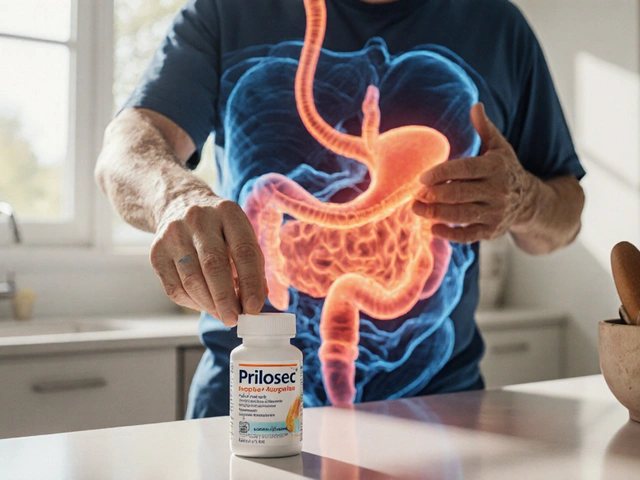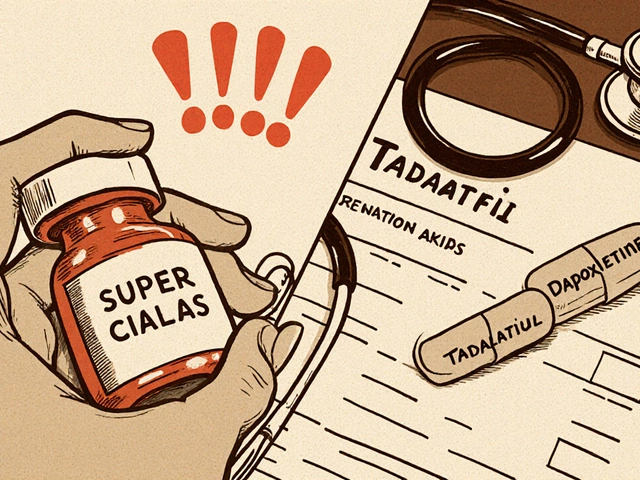PPI Alternative Selector
When it comes to battling heartburn, many people start with Prilosec is the brand name for the proton pump inhibitor omeprazole, used to curb stomach‑acid production. It’s cheap, widely available, and has a solid track record, but the market is full of other options that might work better for your lifestyle, budget, or specific symptoms. This guide lines up the most common alternatives, breaks down what makes each one tick, and helps you decide which pill (or powder) fits your routine.
Why PPIs matter in acid‑reflux treatment
Proton pump inhibitors (PPIs) form a drug class that blocks the enzyme H+/K+‑ATPase - the “pump” that releases acid from the stomach lining. By turning the pump off, PPIs lower the overall acidity, giving irritated esophageal tissue a chance to heal. GERD gastro‑oesophageal reflux disease is the chronic condition most people treat with PPIs. While Prilosec is the most recognizable PPI, four other drugs dominate the prescription‑ and over‑the‑counter shelves.
The main players
- Nexium brand name for esomeprazole, a stereoisomer of omeprazole offering a slightly longer half‑life
- Prevacid brand name for lansoprazole, known for rapid onset and a low‑interaction profile
- Protonix brand name for pantoprazole, often preferred in patients on multiple meds
- Zegerid combination of omeprazole with sodium bicarbonate for quicker relief
- Pepcid brand name for famotidine, an H2‑blocker that works faster but for a shorter period
Quick‑look comparison table
| Generic name | Brand name | Prescription status | Typical adult dose | Onset (hrs) | Duration (hrs) | Common side effects |
|---|---|---|---|---|---|---|
| Omeprazole | Prilosec | OTC / Rx | 20mg once daily | 1‑2 | 24 | Headache, nausea, abdominal pain |
| Esomeprazole | Nexium | Rx (OTC 20mg limited) | 20‑40mg once daily | 1‑2 | 24‑30 | Diarrhoea, flatulence, dizziness |
| Lansoprazole | Prevacid | Rx (OTC 15mg) | 15mg once daily | 0.5‑1 | 24 | Dry mouth, constipation, rash |
| Pantoprazole | Protonix | Rx | 40mg once daily | 1‑2 | 24‑30 | Back pain, nausea, fatigue |
| Omeprazole+NaHCO₃ | Zegerid | OTC | 20mg + 600mg NaHCO₃ once daily | 0.25‑0.5 | 12‑18 | Bloating, gas, metallic taste |
| Famotidine | Pepcid | OTC / Rx | 20mg twice daily | 0.25‑0.5 | 6‑10 | Headache, constipation, dizziness |
Deep dive into each alternative
Prilosec (omeprazole)
Prilosec’s biggest draw is price - a 28‑day supply costs under £5 in most UK pharmacies. It’s effective for classic reflux, erosive oesophagitis, and prevention of NSA‑induced ulcers. Because it’s been on the market for over 30years, the safety profile is well documented. The main trade‑off is a slightly slower onset compared with some newer PPIs, which matters if you need same‑day relief.
Nexium (esomeprazole)
Esomeprazole is chemically a mirror image of omeprazole, giving it a longer plasma half‑life. Studies from 2023 show a 5‑% higher healing rate for severe erosive oesophagitis versus generic omeprazole. The downside? It’s pricier (£12 for 28days) and some insurance plans treat it as a specialty drug, meaning extra paperwork.
Prevacid (lansoprazole)
Lansoprazole works a touch faster - patients often report symptom relief within 30minutes. It also boasts a low potential for drug‑drug interactions, making it a safe choice for people on statins or antihypertensives. Compared with Prilosec, it’s a bit more expensive (£8 for a month) but still cheap enough for most NHS prescriptions.
Protonix (pantoprazole)
Pantoprazole is the go‑to PPI for hospital‑based protocols because it has the fewest interactions with cytochrome‑P450 enzymes. If you’re on multiple chronic meds (e.g., warfarin, clopidogrel), Protonix may be the safest bet. The trade‑off is that it’s only available on prescription in the UK, and the generic version can run £10‑£15 per month.
Zegerid (omeprazole+sodium bicarbonate)
Adding sodium bicarbonate neutralises stomach acid while the omeprazole component works on the pump. This combo can provide symptom relief in as little as 15minutes, ideal for occasional heartburn after heavy meals. However, the bicarbonate adds extra sodium - not great for people on a low‑salt diet - and the pill feels larger, which some find uncomfortable.
Pepcid (famotidine) - the H2‑blocker option
If you need fast, short‑term relief, famotidine is worth a look. It blocks histamine receptors rather than the pump, so it kicks in within 15‑30minutes but only lasts 6‑10hours. It’s also the cheapest OTC choice (≈£2 for a month's supply). The downside: It may not heal the lining in chronic GERD, so it’s best for occasional flare‑ups.
How to pick the right one for you
Think of the decision as a checklist:
- Speed of relief - If you need something fast, Zegerid or Pepcid win.
- Long‑term healing - For chronic oesophagitis, stick with a PPI like Prilosec, Nexium, or Prevacid.
- Drug interactions - On many meds? Protonix is the safest.
- Cost - Prilosec remains the budget champion, followed by Prevacid.
- Prescription vs OTC - OTC options (Prilosec, Prevacid, Zegerid, Pepcid) let you start right away; Rx versions may give stronger dosing.
Most clinicians suggest trying the cheapest effective PPI for 4‑8weeks. If symptoms persist, they’ll rotate to a different PPI or add an H2‑blocker at night.

Safety notes and common pitfalls
All PPIs, including Prilosec, can slightly increase the risk of Clostridioides difficile infection and decrease magnesium absorption if used beyond a year. The NHS recommends a “step‑down” plan - switch to the lowest effective dose or an H2‑blocker after symptom control.
Another frequent mistake is crushing or chewing PPI tablets; the enteric coating protects the drug from stomach acid and ensures it reaches the intestines where it’s absorbed. Breakage can ruin the coating and reduce effectiveness.
Finally, never combine PPIs with antacids that contain calcium carbonate in high amounts without medical advice, as it can lead to excessive calcium intake.
Bottom line
If you’re hunting for Prilosec alternatives, you have a toolbox of proven options. Prilosec stays the best value for most people, but Nexium offers a modest edge for severe cases, Prevacid shines for fast relief with few interactions, Protonix is the drug‑interaction champion, Zegerid gives instant symptom control, and Pepcid is unbeatable for occasional heartburn.
Frequently Asked Questions
Can I switch from Prilosec to another PPI without a doctor?
Most OTC PPIs can be swapped on your own, but if you’ve been on a prescription dose for longer than a month, it’s safer to check with a pharmacist or GP. Switching abruptly can cause a rebound increase in acid production.
Is it okay to take a PPI and an H2‑blocker together?
Yes, many doctors combine them - the PPI handles the baseline acid level while the H2‑blocker tackles night‑time spikes. Timing matters: take the PPI in the morning, the H2‑blocker at bedtime.
What’s the biggest side‑effect risk with long‑term PPI use?
Prolonged use (over 12months) can lead to low magnesium, vitamin B12 deficiency, and a modest rise in bone‑fracture risk. For most adults, a short‑term course (8‑12weeks) followed by a step‑down plan mitigates these issues.
Are generic versions of these PPIs as good as the brand‑name pills?
Yes. In the UK, generic omeprazole, esomeprazole, lansoprazole and pantoprazole must meet the same bio‑equivalence standards as their branded counterparts, so they work the same way.
Can lifestyle changes replace the need for a PPI?
Lifestyle tweaks (weight loss, avoiding late meals, elevating the head of the bed) help a lot, but most people with moderate‑to‑severe GERD still need medication to heal the lining. Use the changes alongside a PPI for the best result.







Write a comment
Your email address will be restricted to us